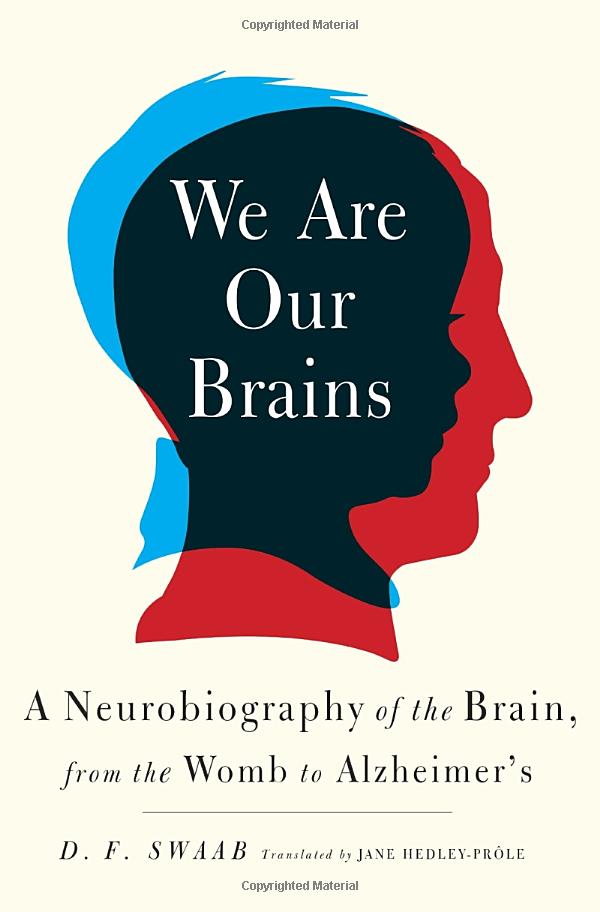 |
We Are Our Brains A Neurobiography of the Brain, from the Womb to Alzheimer’s
D. F. Swaab, translated by Jane Hedley-Prôle
Spiegel & Grau, first U.S. edition, 2014
ISBN: 978-0-8129-9296-0 |
Straightforward and candid, but don’t expect to find fine prose here; this book reads like an instruction manual for the brain. That said, it is filled with plenty of valuable information, albeit without a single reference to allow the reader to further research a topic of his/her liking. Indeed I found myself thinking that I could incorporate much of the material into my classroom if I only had the references handy. Although I can see how the author meant to write this book for a lay audience who would disregard the technical references I can’t help but think that there is never an excuse to include a bibliography. After all, why would you assume that another scientist/clinician won’t be using your book as a reference?
The title would suggest that we will chronologically journey through the brain starting with development and ending with death, but in the end the timeline ends up being somewhat tenuous, and different aspects of the brain are discussed in a seemingly random order. After all, why would “moral behavior” be described after “consciousness” but before “memory”? I thought that there would be a clever narrative that would thread the story into the “neurobiography” that the title promised, but I was disappointed.
All gripes aside, in the end I do recommend reading this book. Not only is it informative, but being written from a European perspective, it offers a distinct and refreshing view on topics that are often considered too sensitive to discuss by American authors, like sexual orientation, pedophilia or euthanasia. I guarantee you that it will make you think long and hard about some preconceptions that you might have. But be advised. If you choose to buy the book, I recommend that you permanently keep a bookmark on page xv, which contains the list of illustrations. Throughout the book, you will be sent to these figures, which are often 50 pages ahead/behind the chapter you are reading, so you find yourself flipping through the book endlessly unless you know exactly where the figure is. To boot, these figures are not that informative for non-neuroscientists, as they are too technical and poorly described, but for what it is worth, you will at least know where to find them.
